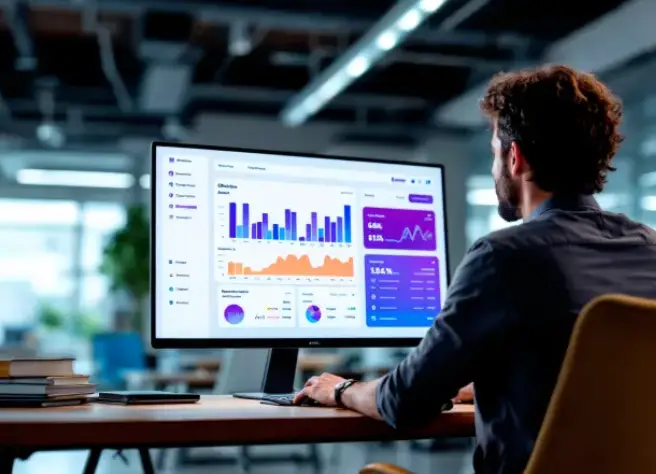
In today’s competitive digital landscape, paid advertising is one of the fastest and most effective ways to boost your online presence, attract targeted traffic, and drive conversions. Whether you’re a small startup or an established brand, strategic paid campaigns can put your business in front of the right audience at the right time.
Let’s explore what paid advertising is, why it’s essential, and how you can use it effectively to strengthen your online visibility.
🔍 What is Paid Advertising?
Paid advertising refers to online marketing where you pay to display ads to a targeted audience across platforms such as:
-
Search engines (e.g., Google Ads, Bing Ads)
-
Social media (e.g., Facebook Ads, Instagram, LinkedIn, TikTok)
-
Websites (via display networks)
-
Video platforms (e.g., YouTube)
-
Shopping platforms (e.g., Google Shopping, Amazon Ads)
You can pay based on different models, such as:
-
CPC (Cost Per Click) – You pay when someone clicks your ad.
-
CPM (Cost Per Mille) – You pay per 1,000 impressions (views).
-
CPA (Cost Per Acquisition) – You pay when someone completes a conversion (like a sale or signup).
🚀 Why Paid Advertising Matters
-
✅ Instant visibility: Unlike SEO, which takes time to build, paid ads can instantly place your brand in front of a targeted audience.
-
✅ Highly targeted: Ads can be shown to specific demographics, interests, behaviors, or locations.
-
✅ Measurable results: You can track impressions, clicks, conversions, ROI, and more in real-time.
-
✅ Scalable: Start with a small budget and scale up as you see results.
-
✅ Great for new product or service launches.
🔑 Types of Paid Advertising and How to Use Them
1. Search Engine Advertising (Google Ads, Bing Ads)
Best for: Capturing intent-based traffic (people actively searching for products or services)
-
Use Google Ads to bid on keywords your audience is searching.
-
Your ad appears at the top of the search engine results page (SERP).
-
Use exact match or phrase match keywords for precision.
-
Include ad extensions (callouts, site links, reviews) to boost visibility.
✅ Tip: Focus on high-intent keywords like “buy,” “near me,” or “best [product/service].”
2. Social Media Advertising (Facebook, Instagram, LinkedIn, TikTok, X/Twitter)
Best for: Brand awareness, lead generation, retargeting
-
Facebook & Instagram Ads: Great for B2C brands; use eye-catching visuals or short videos.
-
LinkedIn Ads: Ideal for B2B marketing; use for lead gen and professional targeting.
-
TikTok Ads: Perfect for younger demographics and viral content.
-
Retargeting: Show ads to people who’ve already visited your website but didn’t convert.
✅ Tip: Use lookalike audiences to target people similar to your existing customers.
3. Display Advertising (Google Display Network, programmatic ads)
Best for: Visual brand exposure, remarketing
-
These ads appear on various websites across the internet in the form of banners, images, or videos.
-
Ideal for raising awareness, especially during early stages of the buyer journey.
-
Can be very cost-effective (low CPM).
✅ Tip: Use custom intent audiences to target users who’ve recently searched for related terms.
4. Video Advertising (YouTube, Facebook, TikTok, Instagram Reels)
Best for: Engagement, storytelling, brand awareness
-
YouTube Ads allow you to place short video ads before or during other videos.
-
Video content can humanize your brand and improve emotional engagement.
-
Combine storytelling with a strong CTA to boost conversions.
✅ Tip: Keep your message clear within the first 5–10 seconds to hook viewers.
5. Shopping Ads (Google Shopping, Amazon Ads)
Best for: E-commerce, product-based businesses
-
Shopping ads show product images, prices, and reviews directly in search results.
-
These ads are highly visual and have high purchase intent.
-
Sync with your product catalog for real-time updates.
✅ Tip: Optimize product titles and images for better click-through rates.
📈 How to Set Up an Effective Paid Advertising Campaign
✅ Step 1: Set Clear Goals
Decide what you want to achieve:
-
Increase website traffic?
-
Generate leads?
-
Boost sales?
-
Promote a product launch?
Your goals will determine the platform, ad format, and targeting method you choose.
✅ Step 2: Know Your Audience
Define your ideal customer:
-
Age, gender, location
-
Interests and behaviors
-
Keywords they search
-
Websites they visit
This helps you create highly targeted campaigns and reduce wasted ad spend.
✅ Step 3: Choose the Right Platform
Don’t spread your budget thin. Start with platforms where your audience is most active. For example:
-
B2B? Go with LinkedIn Ads.
-
Young audience? Try TikTok or Instagram.
-
High-intent searchers? Use Google Search Ads.
✅ Step 4: Create Compelling Ads
Your ads should:
-
Grab attention (with headlines or visuals)
-
Highlight your USP (unique selling point)
-
Have a strong call-to-action (CTA) (e.g., “Buy Now”, “Learn More”, “Sign Up”)
Test different ad versions (A/B testing) to see what performs best.
✅ Step 5: Set Your Budget and Bids
-
Start with a small budget while testing.
-
Use automatic bidding if you’re new, or manual bidding for more control.
-
Monitor your CPC and CPA closely.
✅ Step 6: Monitor and Optimize
-
Track key metrics: Impressions, CTR, CPC, conversions, ROAS (Return on Ad Spend).
-
Pause underperforming ads.
-
Reinvest in top-performing ads or audiences.
-
Adjust keywords, targeting, or creatives as needed.
📊 Key Metrics to Track
| Metric | What it Tells You |
|---|---|
| CTR (Click-Through Rate) | Are people clicking your ad? |
| CPC (Cost Per Click) | How much are you paying per click? |
| Conversion Rate | Are visitors taking the desired action? |
| CPA (Cost Per Acquisition) | How much does it cost to get a customer? |
| ROAS (Return on Ad Spend) | How much revenue are you generating from your ad spend? |
⚠️ Common Paid Advertising Mistakes to Avoid
-
❌ Targeting too broad an audience → Wastes budget
-
❌ Weak CTA → Low conversion rates
-
❌ Poor landing page experience → High bounce rate
-
❌ Not tracking conversions → Can’t measure ROI
-
❌ Set-it-and-forget-it approach → Ads become stale and underperform
💡 Pro Tips to Maximize Results
-
Use retargeting to bring back visitors who didn’t convert.
-
Sync your email marketing with paid ads for follow-up.
-
Keep testing ad creatives and headlines.
-
Align paid ads with seasonal offers or trending topics.
-
Use Geo-targeting for local businesses.
✅ Conclusion: Paid Ads are a Growth Engine
Paid advertising is not just a “quick fix”—it’s a powerful strategy to boost your online presence, build awareness, and grow your business. When done right, it puts your brand in front of the right people at the right time with the right message.
Whether you’re promoting a new product, driving traffic to your site, or trying to reach a new audience, paid advertising can get you there faster and smarter.





